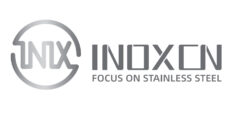In the realm of chemical processing, pharmaceutical manufacturing, and food production, the quest for efficient and cost-effective concentration methods has always been paramount. Among the myriad of technologies available, vacuum evaporators, also known as vacuum reduction concentrators, stand out as a versatile and highly efficient solution. Today, let’s delve into the intricacies of this remarkable technology, exploring its working principles, benefits, applications, and the latest advancements that are shaping the industry.
Understanding the Basics of Vacuum Evaporators
At its core, a vacuum evaporator leverages the principle of reduced pressure to enhance the evaporation process. By lowering the pressure inside the evaporator chamber, the boiling point of the liquid being concentrated is significantly reduced. This allows for evaporation to occur at much lower temperatures compared to atmospheric conditions, preserving heat-sensitive compounds, improving energy efficiency, and reducing the risk of thermal degradation.
Key Benefits of Vacuum Concentration
- Energy Savings: Operating at lower temperatures means less energy is consumed, translating into substantial cost savings for manufacturers.
- Product Quality Preservation: The gentle evaporation process protects heat-labile compounds, ensuring the integrity and quality of the final product.
- Faster Processing Times: Reduced boiling points lead to quicker evaporation rates, accelerating production timelines.
- Versatility: Suitable for a wide range of materials, including viscous liquids, solvents, and heat-sensitive compounds.
- Environmental Friendliness: Efficient use of resources and reduced waste generation contribute to a greener production process.
Applications Across Industries
- Pharmaceuticals: Concentrating active pharmaceutical ingredients (APIs) and solvents without compromising their therapeutic properties.
- Food & Beverage: Preserving flavors, colors, and nutrients during the concentration of juices, syrups, and sauces.
- Chemical Processing: Refining chemicals, recovering solvents, and purifying products through distillation under vacuum.
- Cosmetics & Personal Care: Ensuring the stability and efficacy of fragrances, oils, and other active ingredients during concentration.
Latest Advancements in Vacuum Evaporator Technology
- Automated Control Systems: Integrated PLCs and SCADA systems enable precise temperature, pressure, and flow rate control, optimizing performance and reducing operator intervention.
- Enhanced Heat Transfer Mechanisms: Novel evaporator designs, such as falling film and thin film evaporators, maximize heat transfer efficiency, further boosting evaporation rates.
- Modular Designs: Modular vacuum evaporators facilitate easy scalability, maintenance, and cleaning, making them ideal for both small-scale research and large-scale industrial applications.
- Energy Recovery Systems: Incorporating heat recovery systems captures and reuses waste heat, further enhancing energy efficiency.
Conclusion
Vacuum evaporators represent a pinnacle of modern concentration technology, offering unparalleled efficiency, versatility, and product quality preservation. As industries continue to evolve and demand for sustainable, high-quality production methods increases, vacuum evaporators are poised to play an even more pivotal role in shaping the future of manufacturing. Whether you’re a seasoned professional or just embarking on your journey in the world of chemical processing, understanding the power of vacuum evaporators is a vital step towards achieving operational excellence.
